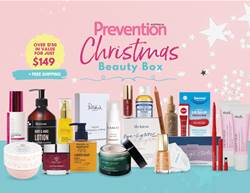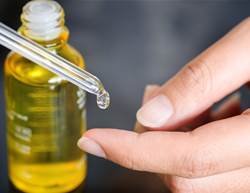We all wish there was a magic wand that could make your lifelong struggle with acne disappear for good — but alas, it lingers on!
You’ve likely had blemishes in lots of places, such as a pimple in your ear, pimples on your butt, or a bout of chin acne, for instance. But what about a pimple inside your nose? While likely invisible to others, a pimple in the nose can be painful and is often difficult to treat. Plus, you might be wondering how to get rid of a blemish in such a tricky location — or if it’s even a pimple at all (hint: it might not be).
A pimple in the nose is understandably annoying and uncomfortable, but is it cause for concern? “While it’s not necessarily concerning, it is important to have it checked out if it doesn’t go away,” says dermatologist Dr Marisa Garshick. “Given the location in the nose [which] can sometimes be hard to see, it’s best to see someone who can help to evaluate it and determine what it is.”
After all, it might not actually be a pimple. And if it’s not, then the method for getting rid of that pesky, painful bump might look a bit different. Ahead, find out how to identify what’s going on in your nose, how to get rid of a pimple in your nose, and more. With the help of our dermatology experts, you’ll be breathing more comfortably in no time.
How did it get in there?!
Your nose, like the rest of your face, has hair follicles and pores that are unfortunately vulnerable to the dirt, oil, and bacteria that can sometimes cause pimples to form.
“A pimple inside the nose can result from inflammation of the hair follicle, which is present inside the nose or as a result of a clogged pore or oil gland,” explains Dr Garshick. “It can also occur as a result of a bacterial infection or ingrown hair.”
Those who are immunosuppressed or have diabetes (due to high blood sugar which can increase the chance of infections) may be more likely than others to experience pimples in the nose or other bumps and infections, Dr Garshick notes. Additionally, “certain habits that can increase the risk of irritation in the nose include picking your nose, blowing your nose too aggressively or too often, and hair removal techniques,” she continues.
Is it actually a pimple though?
“Determining if it is actually a pimple or something else may depend on the appearance and any associated symptoms,” explains Dr Garshick. “If it doesn’t go away, gets bigger, or bleeds easily, it should be evaluated.”
So what else could that bump be? Dr Garshick says it may be a cold sore, which is often accompanied by a burning or stinging sensation and could have a blistered appearance. “Other possibilities, especially if it’s not going away, may include a warty growth or a cancer,” she says.
Alternatively, you could be experiencing folliculitis, explains dermatologist Karan Lal. Folliculitis often shows up as a very painful, angry-looking red bump in the nose and is caused by bacteria entering the hair follicle, leading to inflammation and infection.
Or, it could be something else altogether. “Some people can have polyps in their nose,” Dr Lal continues. “Polyps in the nose are not painful, but they often cause heavy breathing in people with allergies and asthma.” Polyps are a benign growth of tissue that appear as a pink bump, and can more often occur in people who have allergies, deviated septums, or chronic sinus issues.
It's a pimple. So what do I do now?
While a pimple inside your nose will often go away on its own, Dr Garshick notes that if you are experiencing increased pain, symptoms like a fever or swelling, or a bump that will simply not go away, you should see a medical professional. A doctor can help determine what’s going on and prescribe you topical or oral antibiotics depending on the severity of the pimple in your nose, Dr Lal explains.
But, if you’re looking for some ways to ease your symptoms at home, there are a few things you can do. First and foremost, be sure to keep your nose clean, and try using a saline nasal spray or an ointment like Vaseline to keep your nasal passages moisturised and ease the pain, says Dr Lal. Warm compresses on the outside of your nose may also help in treating a pimple inside your nose, but Dr Lal cautions against applying anything to the inside of the nose to avoid a burn.
Is it safe to pop a pimple inside my nose?
If you’re wondering how to pop a pimple inside your nose, first know that both Dr Garshick and Dr Lal say that this is not a good idea.
“You should avoid popping a pimple in the nose as this can risk the chance of infection spreading, given the connections in this area known as the danger triangle to the brain,” Dr Garshick warns. “In general, popping pimples should still be avoided as it can worsen the breakout, lead to more inflammation and increase the potential for scarring.”
How do I prevent this happening again?
If you’ve ever experienced a painful blemish, preventing one in the future is likely top of mind. To keep these pesky bumps at bay, try limiting certain risk factors.
Step one: If you tend to pick your nose, stop. Why? “Because the bacteria [that causes pimples] lives in our skin — so if it’s getting from our skin to our nose, there’s only one way that can happen,” explains Dr Lal.
Also, “don’t pull any hairs from your nose,” Dr Lal continues. “If you want, you can get a nose trimmer and remove hairs that way.” Plucking or waxing — similar to blowing your nose too hard — can cause irritation and make it easier for bacteria to invade the pores and hair follicles in your nose.
If you are experiencing recurring pimples in your nose, decolonisation therapy is also an option. This involves a round of antibiotics prescribed by your doctors which “can help prevent them happening over and over again,” explains Dr Lal.










